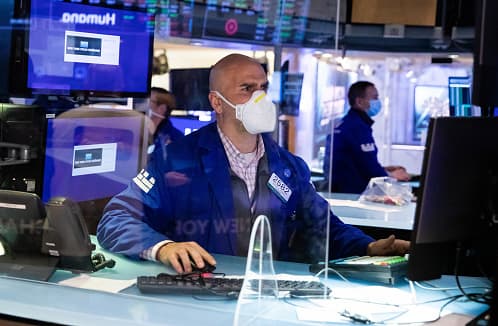Nasdaq falls 1% as tech stock losses continue, but Dow is in the green

The Nasdaq Composite fell on Wednesday, extending its losses from a sell-off in growth-oriented technology stocks in the previous trading session, as investors continued to assess the economic reopening.
The blue-chip Dow Jones Industrial Average rose 98 points, or 0.2%. The S&P 500 lost 0.08%. Meanwhile, the tech-heavy Nasdaq dipped another 0.9%.
Jay Hatfield, founder and CEO of Infrastructure Capital Management, said this week’s jump in bond yields and rise in U.S. omicron cases only exacerbated a trend that began weeks ago, when the Federal Reserve discussed speeding up its bond-buying taper.
“You’ve seen a move of people rotating from tech, high-growth and momentum stocks to value, cyclical and income stocks,” he said. “It’s the liquidity that’s driving this, not the interest rate, necessarily. When there’s liquidity you go for momentum because the Fed is forcing stocks and bonds to rally. If the Fed is going to pull that liquidity out, you say I want to be in what’s the cheapest, the lowest risk.”
Salesforce dropped 5.6% following a downgrade from UBS. UBS also cut Adobe, sending its shares down 4.8%. Both were among the top decliners in the S&P 500.
Adobe also dragged down the Nasdaq along with cloud company Okta, which fell 3.7% and chipmakers Nvidia and Advanced Micro Devices, both down about 2%.
Bank of America gave an upgrade to Pfizer, noting that the company’s profits from Covid treatments provide upside for the stock. Pfizer’s shares moved 2.5% higher.
ADP reported Wednesday that private job growth totaled 807,000 in December, more than double the Dow Jones estimate of 375,000. The data in the report covers only through the middle of December, however, which was before the height of the escalation in Covid cases and concerns.
Investors looking for clues on where the economy stands heading into the new year also awaited Friday’s more closely watched nonfarm payrolls count, which is expected to show a gain of 422,000.
They’re also awaiting the release Wednesday of minutes from the December Federal Reserve meeting. Policymakers decided then to accelerate the pace of the monthly bond buying taper and indicated that three quarter-percentage-point interest rate hikes are coming in 2022. They also adjusted their outlook on inflation and economic growth.
However, the market will be seeking additional information on where officials see policy heading, particularly on what will happen with the Fed’s nearly $9 trillion balance sheet.
“This is the key risk for the year. If the Fed starts shrinking starts shrinking the balance sheet that’s going to be disastrous,” Hatfield said. “I assume that they’re going to keep the balance sheet flat, but it is possible if inflation stays really hot that they start letting the balance sheet run off.”
If that happens, “it’s not just that they’re not injecting liquidity, they’re taking liquidity out,” Hatfield added. “You don’t want to be in the stock market when the Fed is taking liquidity out of it. It’s kind of like being in coke when Warren Buffett is selling his position.”




